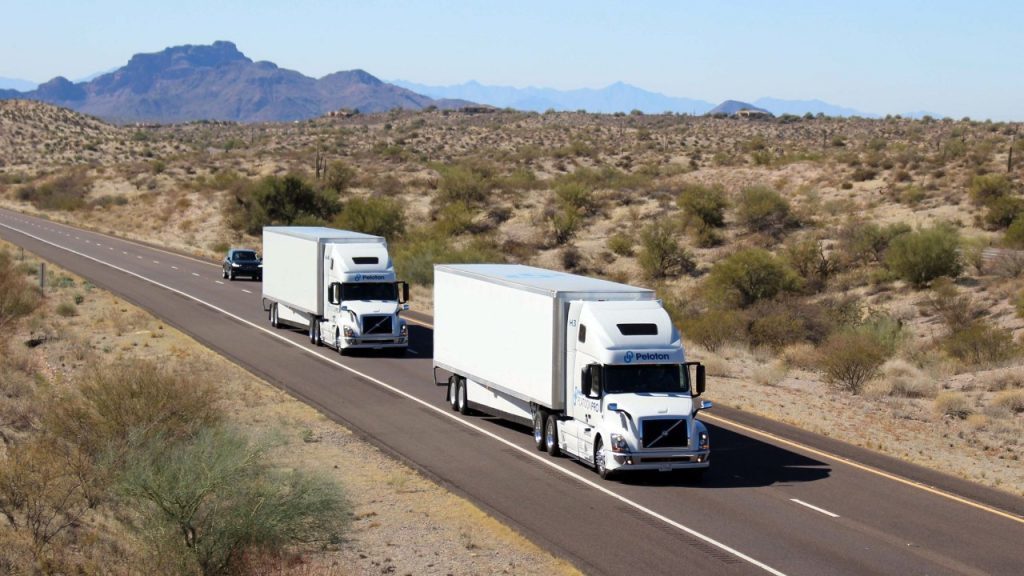Self-driving technology developer Peloton has unveiled its new Level 4 Automated Following solution, designed to double the productivity of truck drivers through platooning.
“We’ve taken a different approach to commercial introduction of automation in Class 8 vehicles,” said Josh Switkes, CEO, Peloton Technology. “We see the drivers as the world’s best sensors, and we are leveraging this to enable today’s drivers to be more productive through automated following platoons.”
Peloton’s Automated Following solution is an advanced platooning system that leverages vehicle-to-vehicle (V2V) technology to enable a single driver to operate two separate vehicles. Platooning systems work by combining V2V communications, radar-based active braking systems, and vehicle control algorithms to deliver connected driving with the aim of improving aerodynamics, fuel economy and safety.
Peloton’s Level 1 (Driver Assistive) system, PlatoonPro, has a driver in both the lead and follow trucks. The driver in the follow truck steers, but the system controls the powertrain and brakes to manage the following distance and to provide immediate reaction to whatever acceleration or braking the lead truck performs. PlatoonPro has been implemented with six customers and additional trials are also underway. In each case, the customer and Peloton have seen a perfect safety record as well as fuel savings averaging over 7%.
Peloton’s new Automated Following system is an SAE Level 4 autonomous solution that connects a fully automated follow truck with a driver-controlled lead truck to platoon. The V2V link allows the human-driven lead truck to guide the steering, acceleration, and braking of the follow truck and connects the safety systems between the trucks with minimal latency.
Despite having fewer drivers per vehicle, Peleton insists that its vision with the L4 Automated Following product is to develop and commercially deploy a solution that will enable drivers to benefit from the ongoing commercial driver shortage by doubling the amount of freight they can haul in a single trip. This will result in improved work for drivers through better routes, schedules and compensation, as well as better quality of life.


